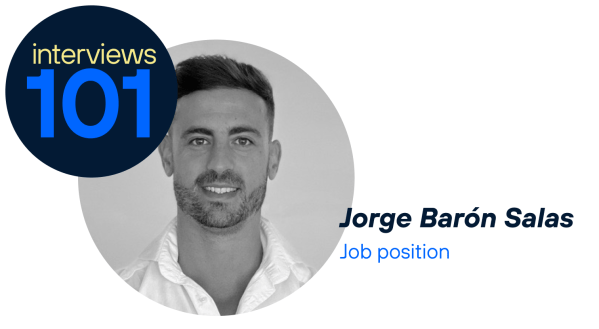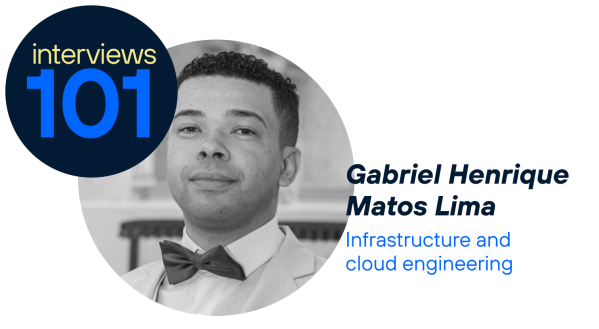Tell us a little about yourself. What does your job at Telefónica involve?
Hello! I’m Ednaldo Silva, a cloud engineer with solid experience in digital transformation, currently working at Vivo (Telefónica Brazil). Throughout my career, I have evolved from operational roles to a strategic role in the adoption and management of cloud technologies.
I am an expert in the creation, migration and maintenance of cloud services, with advanced knowledge of multiple providers, including Microsoft Azure, Huawei Cloud and Oracle Cloud Infrastructure (OCI). I have led key migration projects using Oracle Cloud VMware Solution, ensuring efficient and seamless transitions.
I am a virtualisation specialist with VMware and Citrix, focused on resource optimisation, scalability and high availability. These skills have been essential in aligning the technology infrastructure with the requirements of the modern corporate environment.
My experience gives me a deep understanding of business needs, which strengthens my ability to lead innovative initiatives that drive operational efficiency and the strategic value of technology.
What are virtualisation solutions?
Virtualisation solutions are technologies that allow virtual (or ‘virtual’) environments to be created on a single piece of physical hardware, simulating multiple machines or systems. This allows multiple operating systems and applications to run simultaneously on the same physical server, optimising resources and increasing efficiency.
For example, you can have a single physical machine running multiple virtual machines (VMs), each with its own operating system and specific configurations.
What are the main types?
There are different types of virtualisation depending on the level and purpose:
- Server virtualisation: divides a physical server into several virtual machines, allowing different operating systems to run simultaneously.
- Desktop virtualisation: allows end users to access virtual desktops remotely, providing mobility and security.
- Network virtualisation: creates virtual networks within a physical infrastructure, facilitating network management and security.
- Storage virtualisation: groups several physical storage devices into a single logical resource, improving efficiency and scalability.
- Application virtualisation: runs applications without installing them directly on the user’s operating system, using containers or other mechanisms.
How do the most popular ones differ from each other?
Some of the most popular virtualisation software includes VMware, Hyper-V, Citrix, and Docker. Here is how they differ:
- VMware: A robust and widely used solution for server and desktop virtualisation. It offers products such as vSphere (for servers) and Workstation (for desktops). It is paid software and focuses on large companies, with advanced support.
- Hyper-V: Developed by Microsoft, it is integrated into Windows Server and Windows 10 Pro. Ideal for Windows environments, with good performance and cost-effectiveness. It has limitations on non-Windows operating systems.
- Citrix Platform: The Citrix Platform is one of the best-known and most widely used solutions in the virtualisation market, with a particular focus on delivering virtual desktops (VDI – Virtual Desktop Infrastructure) and applications. The platform encompasses a range of products and services that enable businesses to provide secure, flexible and centralised work experiences, regardless of the device or location of users.
- Docker: Focused on container virtualisation, rather than complete virtual machines. Lighter and faster, as it shares the host operating system kernel between containers. Excellent for developing and deploying applications in the cloud.
What are the advantages of virtualisation?
- Resource savings: Reduces the need for physical hardware, lowering purchase and maintenance costs.
- Energy efficiency: Fewer physical servers mean lower energy consumption and cooling costs.
- Ease of management: Centralises the management of multiple systems on a single platform.
- Availability and recovery: Facilitates the creation of snapshots and backups, speeding up recovery in the event of failures.
- Flexibility and scalability: Allows resources to be easily added or removed to suit business needs.
- Greater security: Isolates virtual environments, reducing the risk of cyber attacks.
- Testing and development: Allows isolated environments to be created to test new applications or systems without affecting the production environment.
What is the professional profile of people working in this technology?
- System administrators: Responsible for configuring, monitoring, and maintaining virtual environments.
- They are familiar with tools such as VMware vSphere, Hyper-V, and Citrix.
- Infrastructure engineers: Plan and implement large-scale virtualisation solutions. They work with cloud and automation concepts.
- Software developers: They use containers (such as Docker) to create consistent environments for development and testing.
- Security specialists: They ensure that virtual environments are protected against external threats.
- Relevant certifications: Certifications such as VMware Certified Professional (VCP), Microsoft Certified: Azure Administrator Associate, and Citrix CCA/CCP can be useful for validating skills.
In summary, virtualisation professionals need to be up to date with the latest technology trends and tools, as well as having a solid foundation in systems administration and IT infrastructure.
Which people working at Telefónica would you nominate for this interview who you consider to be excellent at their job?
Richard Queiroz.










